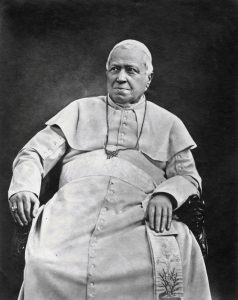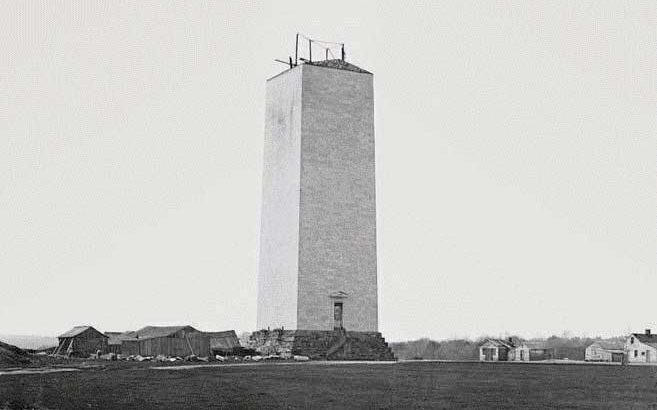Who stole the Papal Stone back in 1854…and why?
I recently came on details of what might be called an American Catholic mystery, which I thought I might share with readers.
I am always amazed at the enthusiasm with which Irish Catholics, and indeed many American Catholics, embrace American conservatives. I am all for brotherly love, but Catholics, certainly Irish Catholics, owe American conservatives, with their anti-foreigner views, little or nothing over the years. The mystery of who stole the so-called “Papal Stone” and what really became of it illustrates this. It is a strange tale and quite unknown to those I have been talking to about it over the last few weeks, but one which needs some background development.
In 1843 a movement got under way to build a monument to George Washington, the General of the Continental Army and first President of the United States of America. Not everyone was in agreement with this. They felt that a revolutionary republic should not in any circumstance be raising monuments to “great men”. (The same argument used here against any kind of Irish Legion d’Honneur.)
However, many thought it a good idea. Yet though Washington, who was said in his funerael oration to be “first in war, first in peace, and first in the hearts of his countrymen”, there were few subscribers to the building fund. “Ah yes,” a friend said to me the other day, “Americans don’t do that sort of thing”.
Enough money came in for the National Monument Society, to start the project in 1848, but not nearly enough to complete it. The society appealed to Washington’s admirers world-wide. Many countries contributed a stone. Siam (today’s Thailand), China, Turkey and the recently (1832) liberated Greece. Their gifts are part of the structure today.
Pius IX
Among those answering the call was a stone sent by the Pope, then Pius IX, the famous “Pio Nono”, as he was familiarly called.
But, writes the journalist from whom I derive the story, this was at the time of the American Party, a nativist, anti-foreign, anti-Catholic, and by extension, an anti-Irish organisation, was coming into national prominence. They were called “the Know-Nothings”, because as a highly secret movement that was their answer to anyone who asked members about it.
The movement demanded that the National Monument Society return the stone to the Pope. The Society, then as now made up of the Federal District’s leading citizens and their wives, ignored them.

Movement
At night, on March 6, 1854, nine of the members of the movement, armed with guns, under the leadership of one Sam Briggs, took action. They held up the night-watchman, broke open the shed where the stones were being worked on, and stole “the Papal Stone”.
They were said to have trundled it down to the boat waiting in the nearby Washington City Canal and to drop the stone into the Potomac, beyond recovery.
But, according to ‘those really in the know’, they didn’t. Sam Briggs and his gang were supposed in fact to have buried the Papal Stone in the woods. But they didn’t do that either, to keep it as a wonderful souvenir of their power, much as an ex-president today might hold on to boxes of top secret documents about the nuclear weapons he once controlled.
But in 1959 a Washington DC journalist, the legendary George Kennedy, who wrote the “The Rambler” column in the Evening Star, the city’s popular afternoon paper, shared a secret with his readers.
Pavement
The truth really was as Kennedy’s “deep-throat” told him in person (having refused to talk about it over an open phone), was that the stone is two feet under the pavement at 21st and R Streets. It was uncovered there by workmen dealing with the public utilities. “It was the stone aright. It had a Latin engraving stating it was a gift from Pius IX to the United States.”
But 1927 was a difficult time for politics. Al Smith, a Catholic, was running a heated campaign for the Presidency. So the District Engineers Commissioner’s Office told the men to cover it up again and tell nobody about it. And so they did.
But Kennedy’s ‘revelation’ was doubted. And in 1982 a facsimile stone, for which a priest provided an inscription in Latin about its papal origin, was put in place at long last.
There may be an air of an urban legend about Kennedy’s story. But there is no doubt at all about the anti-Catholic, anti-Irish sentiments of 19th Century American nationalists. That so many Irish-Americans are now themselves nationalists in their turn is an ironical turn of history.
But think: even American tigers do not change their stripes.
This article draws largely on a causerie by George Kennedy in “The Rambler” column of the Evening Star (Washington, D.C.), May 21 1959, section B, page 1.


 Peter Costello
Peter Costello Washington Monument in the
course of construction.
Washington Monument in the
course of construction. 